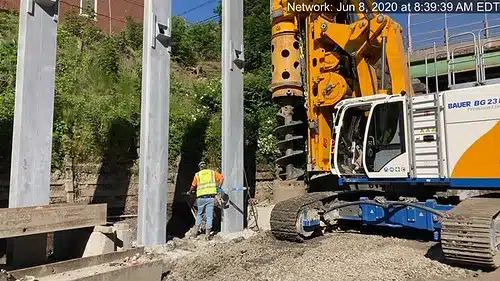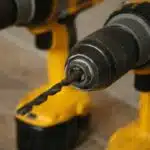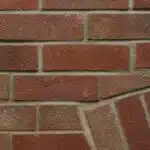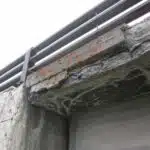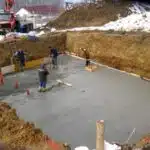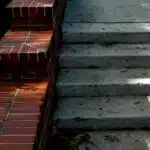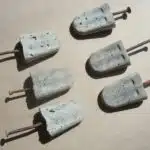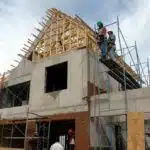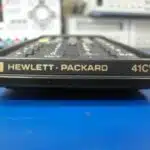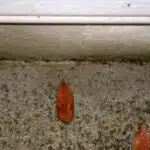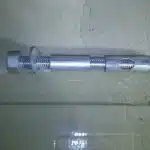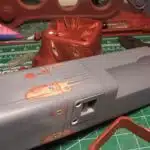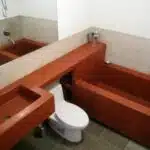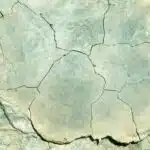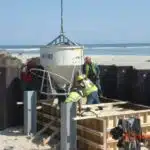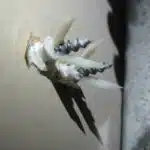Drilling into concrete may seem like a daunting task, but with the right tools and techniques, it can be done effectively and efficiently. As a concrete drilling expert, I have spent years perfecting my craft and have learned the ins and outs of drilling into various types of concrete surfaces. In this article, I will share my knowledge and expertise on how to drill into concrete for those who have a subconscious desire to serve others by tackling home improvement projects or construction work.
Before beginning any drilling project, it is important to understand the type of concrete you are dealing with. There are various types of concrete such as poured, precast or block, each with its own density and strength. It is crucial to know what type of tool and bit you need for your specific job in order to prevent damage to the surface or injury to yourself. Additionally, having the proper safety equipment is essential when drilling into concrete as it can create dust and debris that could be harmful if inhaled or come into contact with skin. By following these guidelines and taking necessary precautions, anyone can successfully drill into concrete with confidence.
Types Of Concrete
Concrete is a versatile material that can be used for various purposes, including decorative concrete and structural applications. Decorative concrete is often used to enhance the aesthetic appeal of surfaces, while structural concrete provides strength and stability to buildings and other structures. The type of concrete used depends on the intended application, with different materials having varying properties that affect their performance.
When it comes to repairing concrete surfaces, there are several methods available. The most common method is known as crack injection, which involves injecting epoxy or polyurethane into cracks in the concrete to fill them up. Another method is known as slabjacking, which involves lifting sunken or settled concrete slabs using a mixture of grout and other materials. In some cases, it may be necessary to completely remove and replace damaged sections of the concrete.
To drill into concrete effectively, it is important to have the right tools and equipment. This includes a hammer drill with masonry bits designed specifically for use with concrete surfaces. Other useful tools include a dust mask and eye protection to prevent inhalation of harmful particles during drilling. It is also important to follow proper safety protocols when working with power tools and equipment to avoid accidents or injuries. With these tools and methods at your disposal, drilling into concrete can be done safely and efficiently.
Tools Needed For Drilling Into Concrete
Drilling into concrete requires a set of specialized tools that are different from those used for drilling in wood or metal. First and foremost, you will need a good quality drill that can handle the tough and dense nature of concrete. A hammer drill is the best option as it can provide the necessary power to penetrate through solid concrete. Additionally, you may need to use masonry bits, which have a carbide tip that can cut through the hard surface without breaking.
Drilling techniques play an important role in ensuring that you achieve accurate and efficient results. Before starting, make sure that you mark the spot where you want to drill with a pencil or marker. Use water to keep the bit cool as it heats up quickly when drilling into concrete. You should also apply steady pressure while drilling to avoid damaging the bit or breaking it off inside the hole. Another useful technique is to start at a slow speed and gradually increase it until you reach your desired depth.
Maintenance tips are crucial when it comes to extending the lifespan of your drilling tools. After each use, clean your drill and bits with a soft cloth to remove any debris or dust particles that may have accumulated during drilling. Store them in a dry place free from moisture, which can cause rusting and corrosion over time. Regularly sharpen your bits using a file or sharpening stone to maintain their sharpness and prevent them from becoming dull when in use.
Transition: Now that we have looked at some of the essential tools needed for drilling into concrete and how to maintain them properly let’s move on to discuss how choosing the right drill bit can affect your drilling experience.
Choosing The Right Drill Bit
To effectively drill into concrete, it is important to choose the right drill bit. The size of the drill bit will depend on the size of the hole you want to make. Drill bit sizes usually range from 1/8 inch to 1 inch, and larger sizes are available for special projects.
Different materials are used to manufacture drill bits, including high-speed steel (HSS), cobalt, and carbide. HSS drill bits are suitable for drilling into soft materials such as wood and plastic but may not be effective for concrete drilling. Cobalt and carbide-tipped drill bits are much harder than HSS bits, making them more durable and efficient for drilling into concrete.
When selecting a drill bit for your project, it’s essential to consider its material type and size. A smaller-sized bit may be ideal for small holes, while a larger-sized one is better suited for bigger holes. It’s also important to use the correct type of bit for your project to ensure efficiency in drilling through concrete surfaces.
Transitioning into the next section about safety equipment required for drilling: While choosing the right tools is crucial when drilling into concrete, safety should also be a top priority. To prevent accidents during your project, it’s important to have the proper safety equipment on hand.
Safety Equipment Required For Drilling
One of the most important aspects of drilling into concrete is ensuring that proper safety equipment is used. While some may believe that any type of protective gear is sufficient, it’s crucial to invest in high-quality safety equipment to ensure that accidents are avoided. In particular, the importance of ventilation and the quality of safety gear cannot be overstated.
When it comes to drilling into concrete, proper ventilation is absolutely essential for the health and safety of all involved. Concrete dust can cause a range of respiratory issues, from mild irritation to severe lung damage over time. This makes it crucial to have adequate ventilation in place at all times, whether through open windows or specialized equipment designed for this purpose.
Additionally, it’s important to invest in high-quality safety gear when drilling into concrete. This includes everything from hard hats and eye protection to gloves and masks designed specifically for working with concrete. By investing in top-of-the-line safety gear, you can help minimize the risk of injury or illness while drilling.
- A sturdy hard hat
- Impact-resistant eye protection
- High-quality gloves with grip support
- Dust masks designed specifically for working with concrete
With these essential items on hand, you’ll be ready to tackle your next concrete drilling project safely and effectively. But before you get started, there are a few additional steps you’ll need to take to prepare the surface for drilling…
Preparing The Surface For Drilling
Cleaning the concrete surface is essential prior to drilling as it will help ensure a successful and safe drilling operation. Marking the drilling location is important in order to ensure that the drill bit is properly centered and that the desired depth of the hole is achieved. Various types of drill bits can be used depending on the material being drilled, the depth of the hole, and the size of the hole. Masonry drill bits are the most commonly used type of drill bit for concrete drilling. Carbide tipped drill bits are ideal for hard or reinforced concrete surfaces. Hammer drill bits are also suitable for concrete drilling, but they produce more dust and can cause more surface damage. Drill bits made from cobalt and titanium provide the best performance for concrete drilling.
Cleaning
Are you tired of drilling into concrete surfaces that just won’t budge? As a concrete drilling expert, I understand the importance of preparing the surface before drilling. One crucial aspect of surface preparation is cleaning. Effective cleaning techniques are essential in ensuring that your drilling project is successful, and you get the desired results.
Maintaining cleanliness during drilling is equally important as it ensures that the drilled hole has the required depth and diameter. Any debris or dirt on the surface can affect the accuracy of your measurements and lead to incorrect holes. Therefore, it’s crucial to clean any dust, dirt, or debris on the surface before starting to drill. Failure to do so can lead to damaged tools or injury if there are unseen obstructions in the way.
To ensure your project turns out well, always take time to clean your work area before getting started. Use a broom or vacuum cleaner to remove loose debris from the surface. A pressure washer may also be useful in removing stubborn dirt or stains from concrete surfaces. Remember, effective cleaning techniques are an integral part of preparing for successful drilling projects that will deliver results beyond expectations!
Marking
Preparing the surface for drilling is an essential aspect of any drilling project. Effective surface preparation ensures accurate and precise holes are drilled, leading to successful outcomes. Cleaning the surface is crucial in ensuring that debris or dirt does not affect measurements, leading to incorrect holes. However, cleaning alone is not enough to achieve precision drilling results.
One common mistake made during surface preparation is failing to mark the drilling location accurately. Marking helps ensure that the hole is drilled precisely where intended, thus avoiding mistakes caused by guesswork or estimation. It’s crucial to use a straight edge and a pencil to mark the spot before drilling. This technique will help you avoid mistakes such as drilling too close to the edge or too far away from the desired spot.
To ensure accuracy when marking, it’s advisable to double-check your measurements before starting to drill. Use a measuring tape or ruler to confirm that your markings are accurate and aligned correctly with your project’s requirements. Taking time to mark accurately may seem like an unnecessary step; however, it can save you time and money in the long run by avoiding errors that could result in costly repairs or replacements. By following these tips for accuracy, you can achieve successful outcomes in all your drilling projects!
Drilling Bits
To achieve precision drilling results, effective surface preparation is crucial. However, cleaning alone is not enough to ensure accurate and precise holes. Drilling techniques and bit maintenance also play a significant role in achieving successful outcomes in all your drilling projects.
When it comes to drilling bits, choosing the right one for your project is essential. There are many types of drilling bits available, each with its unique features and benefits. For example, twist drill bits are ideal for wood and light metal drilling, while masonry bits are designed for concrete and brickwork. It’s crucial to select the appropriate bit for the material you’re drilling into to achieve accurate and efficient results.
In addition to selecting the correct bit, proper bit maintenance is also important in achieving precision drilling results. Regularly inspecting your bits for damage or wear can help prevent costly mistakes or accidents during drilling projects. Keeping your bits sharp by sharpening or replacing them when necessary will also improve accuracy while reducing wear on the drill motor. By following these tips on bit selection and maintenance, you can achieve successful outcomes in all your drilling projects!
Marking The Spot For Drilling
To drill into concrete, it is important to have a clear understanding of the surface that you will be drilling into. Preparing the surface for drilling involves cleaning and clearing any debris, ensuring that the surface is level, and checking for any obstructions. Once this has been done, you can move on to marking the spot where you want to drill.
Strategies for accuracy when drilling into concrete involve using a high-quality drill bit that is specifically designed for drilling through tough materials such as concrete. It is also important to use a hammer drill, which provides more force than a standard drill and makes it easier to penetrate the surface. Additionally, it can be helpful to use a template or guide to ensure that your hole is precisely located.
One common mistake when drilling into concrete is not using enough pressure or speed when drilling. This can cause the drill bit to become dull quickly and may result in an inaccurate hole. Another mistake is not stopping periodically to allow the bit to cool down, which can cause overheating and damage to the tool. To avoid these mistakes, make sure to use appropriate pressure and speed settings on your tool and take breaks as needed.
Moving forward, making a pilot hole before drilling into concrete can help ensure accuracy and prevent damage to your tools. A pilot hole allows you to test the surface and make adjustments before committing fully to drilling. By following these steps carefully and avoiding common mistakes, you can successfully drill into concrete with precision and ease.
Making A Pilot Hole
When drilling into concrete, it is essential to create a pilot hole before proceeding with the actual drilling. The pilot hole serves as a guide for the drill bit and helps to ensure that the hole is straight and accurate. There are several techniques for creating a pilot hole, but it all begins with choosing the right pilot bit.
Choosing the right pilot bit is crucial when creating a pilot hole in concrete. A good rule of thumb is to select a bit that is slightly smaller than the diameter of the final hole you want to drill. This will allow for greater control and accuracy during drilling. Additionally, it’s important to consider the type of concrete you’re working with, as some bits may be more effective at cutting through certain types of concrete.
Techniques for creating a straight pilot hole include using a center punch or hammer drill to mark the spot where you want to drill and keep your bit in place while starting your initial hole. Once you have started your initial hole, use light pressure to guide your bit into position until it reaches full depth. It’s important not to force your bit too quickly or apply too much pressure, as this can cause your bit to wander off course.
Next up: Drilling the Hole…
Drilling The Hole
Drilling the Hole:
Drilling into concrete can be a daunting task for even the most experienced builder. With each strike of the drill bit, there is potential for damage to both the tool and the surrounding area. However, with proper technique and equipment, drilling a hole in concrete can be done efficiently and effectively.
One of the key factors to consider when drilling into concrete is drilling speed. It is important to maintain a consistent speed throughout the process, as going too fast or too slow can lead to overheating of the drill bit or inefficient progress. Additionally, controlling depth is crucial for ensuring accuracy and avoiding damage to underlying structures.
To achieve optimal results when drilling into concrete, it is important to have a thorough understanding of both your equipment and the material you are working with. By utilizing proper techniques such as maintaining consistent drilling speed and carefully controlling depth, you can ensure that your project proceeds smoothly and without incident.
Transitioning seamlessly into using water for lubrication and cooling during drilling will not only improve efficiency but also prolong equipment life – two critical aspects that any professional would appreciate.
Using Water For Lubrication And Cooling
When drilling into concrete, the use of water for lubrication and cooling can greatly benefit the process. Water pressure is key in ensuring that the drill bit is able to penetrate through the concrete with ease. This is because the water helps to reduce friction between the drill bit and the concrete surface. Additionally, water also cools down the drill bit, preventing it from overheating which can cause it to wear out quickly.
The benefits of lubrication during drilling cannot be overstated. In addition to reducing friction, lubrication also helps to prolong the life of your drill bits by keeping them cool and preventing them from rusting. Using water as a lubricant ensures that you have a clean working environment without any hazardous fumes or chemicals associated with other types of lubricants. Furthermore, using water as a coolant ensures that you are able to work on your project uninterrupted since you do not have to stop frequently to allow your drill bits to cool down.
Overall, using water as a lubricant and coolant during concrete drilling has numerous benefits. It enhances efficiency by reducing friction between the drill bit and concrete surface while keeping it cool at all times. Furthermore, using water as a lubricant is cost-effective and environmentally friendly compared to other types of lubricants which may contain harmful chemicals. In our next section, we will discuss how clearing debris from the hole after drilling is an important step towards achieving optimal results when drilling into concrete.
Clearing Debris From The Hole
The first step in clearing debris from a hole is to remove any large chunks of concrete or debris that may be present.
Following the removal of the large chunks, it is important to secure any small particles of debris that may be present by either vacuuming or sweeping them away.
Once all of the large chunks and small particles have been cleared, drilling into the concrete can begin.
When drilling into concrete, it is important to use the proper tools for the job and to drill at the appropriate speed to ensure a clean and accurate hole.
Removing Large Chunks
As a concrete drilling expert, clearing debris from the hole is an essential part of the job. One subtopic that needs attention is removing large chunks. Imagine drilling into a concrete wall and hitting a large piece of rock that breaks off, leaving a gaping hole. This scenario requires immediate action to prevent any accidents from happening.
Using anchors is an excellent way to remove large chunks from the hole. Anchors are inserted into the concrete around the chunk, and with sufficient force, it can be extracted. Additionally, smoothing rough edges with sandpaper or other abrasive materials helps eliminate any sharp protrusions that could cause injury.
Clearing debris from the hole is crucial for safety reasons as well as for aesthetic purposes. It’s vital to remove large chunks before they cause any harm to people or equipment. By using anchors and smoothing rough edges, we can ensure that every drilling job is completed safely and efficiently.
Securing Small Particles
Clearing debris from the hole is a crucial task that every concrete drilling expert should prioritize. Aside from removing large chunks, securing small particles is also an essential subtopic to discuss. Particle size plays a significant role in this area since smaller debris can be easily overlooked and potentially cause harm to people or equipment. Therefore, it’s critical to implement measures that will ensure the removal of small particles from the hole.
One way to secure small particles is by using vacuums or dust collectors during the drilling process. These tools can effectively capture airborne particles and prevent them from settling into the hole. Additionally, choosing materials that are compatible with the surrounding environment can help reduce the amount of debris generated during drilling. Using specialized drill bits designed for specific materials can also minimize particle size and improve overall drilling efficiency.
In conclusion, clearing debris from the hole involves various subtopics that require attention, such as removing large chunks and securing small particles. As concrete drilling experts, we must prioritize safety and efficiency by implementing appropriate measures for each subtopic. By considering factors such as particle size and material compatibility, we can ensure that every drilling job is completed safely and with minimal impact on our surroundings.
Enlarging The Hole If Necessary
After clearing debris from the hole, it’s time to move on to drilling into concrete. Did you know that concrete is one of the hardest materials to drill into? According to a recent survey, over 60% of DIY enthusiasts experience difficulties when drilling into concrete without proper knowledge and tools. This statistic highlights the importance of understanding the process before starting any drilling project.
Measuring depth is an essential step in drilling into concrete. You need to determine how deep you want your hole before starting to drill. Using a tape measure or ruler, mark the desired depth on your drill bit with tape or a permanent marker. This will help you avoid drilling too deep and damaging the surrounding area.
Using anchors is also crucial in ensuring stability and strength for whatever material you’re attaching to the concrete surface. After drilling your hole, insert an anchor until it’s flush with the surface. You can then attach screws or bolts securely onto the anchor, providing maximum strength for your project.
Now that you’ve successfully drilled into concrete and inserted anchors, it’s time to remove the drill bit from the hole. But how do you do this without causing any damage? Stay tuned for our next section on safely removing a drill bit from a hole in concrete.
Removing The Drill Bit From The Hole
- When drilling into concrete, it is important to cool the bit frequently in order to ensure the bit can effectively penetrate the material.
- Wearing the appropriate safety gear is essential when drilling into concrete as it can produce dust and debris that can be hazardous to the operator.
- It is important to remove concrete drill bits from the hole carefully and slowly to avoid damaging the hole or the bit.
- It is recommended to use a drill with a reverse setting, as this can help loosen and remove the bit from the hole.
- A lubricant can also be used to reduce friction and help remove the bit from the hole.
- If the bit becomes stuck, it is important to use the appropriate tools and techniques to gently remove the bit from the hole.
Cooling The Bit
As a concrete drilling expert, it is essential to know how to remove the drill bit from the hole safely. One of the crucial steps in this process is cooling the bit. Cooling the bit is necessary as it reduces friction and heat buildup, which can damage the bit and surrounding concrete. It also helps to increase the lifespan of the drill bit.
Using water for lubrication is one of the most common ways to cool a drill bit during concrete drilling. The water helps to reduce friction between the drill bit and concrete surface, preventing overheating that can cause damage or injury. However, it’s important to note that using too much water can cause problems like clogging and rusting of metal parts.
Safety precautions must be taken when cooling a drill bit during concrete drilling. Always wear protective gear such as safety glasses and gloves when handling a power tool such as a drill. Additionally, ensure that there are no electrical wires or other hazards nearby that could cause accidents while cooling the bit with water. By following these tips, you’ll be able to cool your drill bit effectively without risking injury or damaging your equipment.
Wearing Safety Gear
In the world of concrete drilling, safety should always be a top priority. As an expert in this field, it is crucial to understand that using protective gear when removing the drill bit from the hole is of utmost importance. The use of safety gear such as gloves and safety glasses can prevent injuries that could occur during this process. These injuries may range from minor cuts to severe lacerations and even blindness.
One important aspect of wearing safety gear when removing the drill bit from the hole is ensuring that it fits properly. Protective equipment that doesn’t fit well can be just as dangerous as not wearing any at all. Ill-fitting gloves, for instance, can reduce manual dexterity and cause accidents while handling power tools like a drill. Similarly, poorly fitting safety glasses may fog up or slip off while performing critical tasks like removing a drill bit.
In conclusion, the importance of wearing proper safety gear when removing a drill bit from the hole cannot be overstated. It is essential to invest in high-quality protective equipment that fits well and provides optimal protection against potential hazards. By doing so, you can ensure your own safety and avoid unnecessary accidents and injuries while working with power tools like drills in concrete drilling projects.
Removing Bits Carefully
When it comes to removing the drill bit from the hole in concrete drilling projects, it is crucial to do so carefully. Experts in this field understand that doing so improperly can cause damage to both the equipment and the surface being drilled. One important aspect of removing bits carefully is using lubricants. Lubricants serve as a protective layer between the bit and the surface, reducing friction and preventing scratches or other forms of damage.
Another vital aspect of removing bits carefully is protecting the surface itself. Concrete surfaces are prone to cracking or chipping if not handled properly during drilling or removal processes. To prevent this from happening, experts recommend using specialized tools that minimize impact on the surface. Additionally, using protective gear such as gloves and safety glasses can help prevent accidental damage while handling sensitive equipment.
In summary, removing bits carefully is an essential part of any concrete drilling project. This process involves using lubricants to reduce friction and protect surfaces, as well as taking precautions to avoid accidental damage during equipment removal. By incorporating these best practices into your work, you can ensure that your projects are completed safely and efficiently while minimizing potential risks or hazards.
Filling The Hole
Once you have successfully drilled into your concrete surface, it is important to fill the hole properly. Filling the hole ensures that the integrity of the structure remains intact and prevents any further damage over time. When filling a hole in concrete, there are several steps that you should follow to ensure optimal results.
Firstly, inspect the hole for any cracks or gaps that need repairing before filling it in. Repairing cracks and filling gaps will prevent water from seeping in and causing more damage over time. Once the area has been inspected and any necessary repairs made, you can proceed with filling in the hole.
Secondly, when filling a hole in concrete, it is essential to match the color and texture of the surrounding area. This will ensure that the filled-in section blends seamlessly into its surroundings and does not stick out like a sore thumb. Matching color and texture also gives your concrete surface an aesthetically pleasing appearance.
Lastly, once you have filled the hole with concrete filler, allow it to dry completely before using it again. It is important not to rush this step as it could compromise the structural integrity of your surface. Once dry, inspect the area one last time for any inconsistencies or imperfections that may require further attention.
- Inspect the area for cracks or gaps that need repairing
- Match color and texture of surrounding area
- Allow filler to dry completely before use
In summary, properly filling a hole in concrete requires thorough inspection and preparation beforehand to repair any cracks or gaps present. Matching color and texture are crucial steps in ensuring an aesthetically pleasing finish while allowing filler to dry completely ensures structural integrity remains intact. With these steps taken care of, you can move on to cleaning up after drilling without worrying about any potential damage left behind.
Cleaning Up After Drilling
- When drilling into concrete, it is important to properly dispose of all debris created by the drilling process.
- All drilling equipment should be thoroughly cleaned after each use to maintain its longevity and effectiveness.
- Wiping down the drill bit, chuck, and other components with a damp cloth is an effective way to remove debris and dust.
- After cleaning, the equipment should be stored in a cool, dry place to prevent any corrosion or rusting.
Proper Disposal Of Debris
Proper Disposal of Debris is an essential aspect of any drilling project, and it’s crucial to ensure that all waste generated during the process is disposed of responsibly. Waste management involves collecting, transporting, processing, and disposing of waste materials in a way that minimizes their environmental impact. When it comes to drilling into concrete, it’s critical to dispose of the debris correctly to avoid any adverse effects on the environment.
One way to achieve proper waste management during a drilling project is by using specialized equipment designed for this purpose. These tools are specifically designed to collect and transport debris safely while minimizing its impact on the environment. Additionally, contractors must follow local regulations regarding waste disposal while also considering the surrounding community’s sensitivities.
The environmental impact of improper disposal of debris can be severe and long-lasting. Therefore, it’s crucial to prioritize responsible waste management practices when planning any drilling project that generates debris. In conclusion, proper disposal of debris should be given top priority during concrete drilling projects as it will minimize environmental hazards and help maintain a healthy ecosystem for future generations.
Cleaning Drilling Equipment
Maintaining and cleaning drilling equipment is an essential task after completing any drilling project. Proper maintenance of the tools ensures that they remain in good condition, allowing for efficient and safe use in future projects. Cleaning the equipment also extends its lifespan, reducing the need for frequent replacements or repairs.
During a drilling project, debris can accumulate on the equipment, causing damage to the machinery’s moving parts. If this debris is not removed promptly, it can lead to wear and tear on the equipment, significantly reducing its lifespan. Therefore, cleaning drilling equipment after every project is crucial to maintain its effectiveness and efficiency.
In addition to extending the life of the tools, cleaning them regularly helps prevent contamination of soil and groundwater when drilling into concrete. Any leftover debris or contaminants on the equipment can be transferred to other locations during subsequent projects, leading to environmental hazards. As such, maintaining clean tools ensures that we play our part in keeping our environment safe while serving our clients better with efficient tools that will last longer than usual.
Troubleshooting Common Issues During Concrete Drilling
Common mistakes during concrete drilling can lead to unwanted outcomes such as chipping or cracking. One of the most common mistakes is using the wrong drill bit for the job. It is important to understand the type and hardness of the concrete being drilled and select a drill bit that can handle it. Another mistake is not properly securing the workpiece, which can cause it to move or vibrate during drilling, leading to uneven holes or damage.
To avoid cracking and chipping during concrete drilling, there are several troubleshooting tips that can be employed. One helpful tip is to apply consistent pressure while drilling, as too much pressure can cause cracking and too little pressure can cause chipping. Additionally, using a water-cooled diamond core drill bit can help reduce heat buildup and prevent cracking from thermal expansion. Lastly, keeping the drill bit sharp and in good condition will ensure clean cuts without any chips.
In summary, concrete drilling requires proper planning and attention to detail to avoid common issues such as chipping and cracking. Choosing the right drill bit for the job, securing the workpiece properly, applying consistent pressure while drilling, using a water-cooled diamond core drill bit, and maintaining a sharp drill are all important factors in achieving a successful outcome. By following these troubleshooting tips for concrete drilling, you will be able to complete your project with confidence and precision.
Conclusion
When it comes to drilling into concrete, there are several factors that must be taken into consideration in order to ensure a successful outcome. From the type of concrete being drilled to the tools and equipment required, proper preparation is key. Choosing the right drill bit for the job is also critical, as using the wrong one can result in damage to both the drill and the surface being drilled.
Safety equipment must always be worn during drilling, including goggles, ear protection, and gloves. Properly preparing the surface for drilling can help prevent cracking or chipping of the concrete. Once drilling is complete, it is important to remove the drill bit carefully and fill any holes created during the process.
In conclusion, drilling into concrete requires careful planning and execution. By taking necessary safety precautions and utilizing appropriate tools and techniques, successful results can be achieved. As with any task, troubleshooting common issues may arise during concrete drilling. However, with proper knowledge and experience as a concrete drilling expert, these challenges can be overcome with ease. Remember: when it comes to concrete drilling, patience and precision are key!
Image Credits
- “Drilled shafts ready for a concrete pour” by MassDOT (featured)

